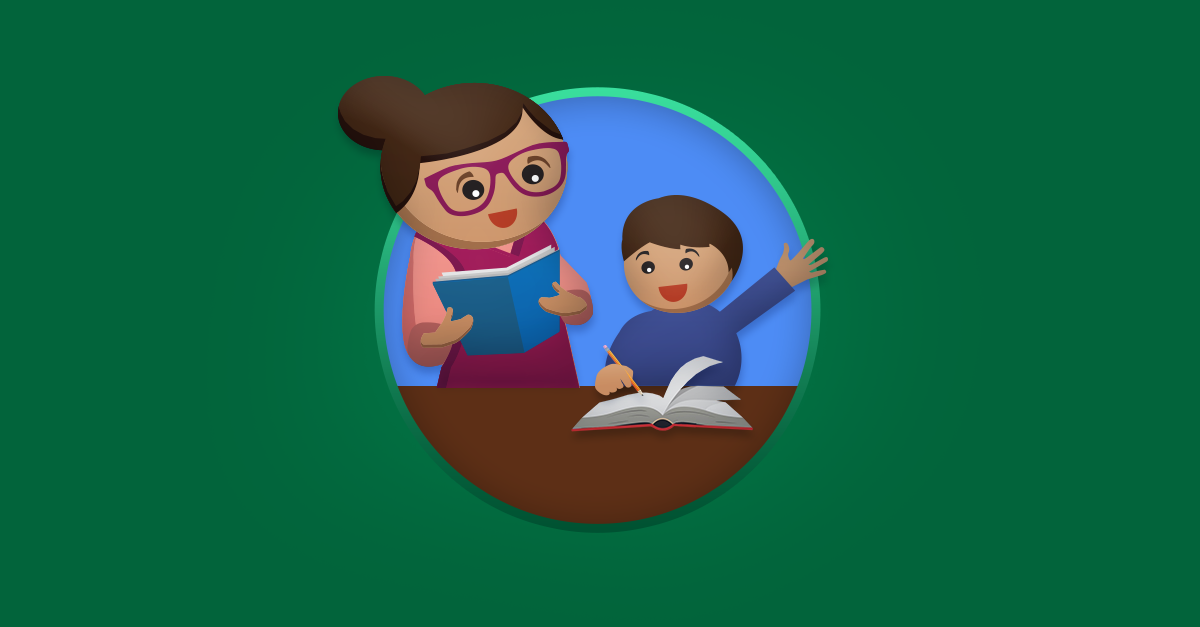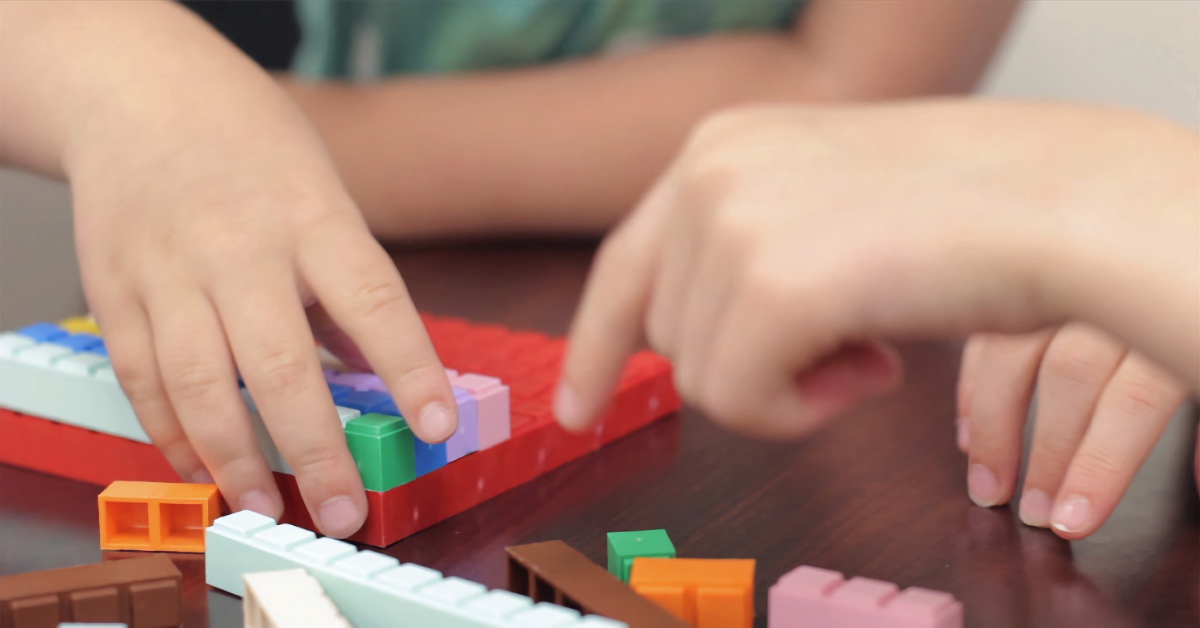
You can help your students learn math fact fluency at home or in math class; read some of our strategies in this blog post.
Let’s say you and a friend are each making a cake. You both know how to make it and understand the recipe. However, your friend gets to use the fancy mixer which sits on the counter, while you use that old hand beater that is hard to crank. You both have the possibility of ending up with a yummy cake; however, one of you experiences more frustration along the way. In fact, if you knew that was the only tool you were ever going to be able to use, you might find cake-making a lot less interesting or even something you avoid.
The math student who does not have the tool of knowing math facts without counting or long pauses is likely to lose interest as well.
What is Math Fact Fluency?
Math fact fluency is a student’s ability to quickly and accurately recall basic facts for addition, subtraction, multiplication, and division. It’s a vital skill for elementary students as it frees up mental resources for more complex problem-solving. While conceptual understanding is essential for building a strong foundation, fluency with basic facts is necessary for efficient computation. By mastering these fundamental operations, students can focus on applying their knowledge to higher-level mathematical concepts.
The Struggle with Math Fact Fluency
If you are a parent who is feeling the pain of watching your child struggle in math, knowing the problem might be that they have not memorized single-digit math facts, you are not alone. In my 25+ years of supporting parents, I encounter at least one parent with this exact issue each day.
For some, flash cards, drill sheets, promises, and incentives seem to improve math fact fluency. The results reveal, however, that many of the learned math facts slip away from short-term memory after a break from school.
Flash card abuse is a problem for me as I try to encourage my children’s memorization of math facts: “I just showed you this flash card two minutes ago!” are words I wish had never slipped from my mouth; I think that may be why I am so passionate about this subject.
Flash cards and drill sheets do not teach, and for most students. the sheer willpower needed to get those math facts into rote memory will not make them stick.
While timed drill sheets are another method that might work for some, for others this creates anxiety attacks. Think about it; what if you as an adult wanted to learn something and the instructor said, “Just do it faster, and I will time you”?
Strategies for Teaching Basic Math Facts
1. Number Sense and Counting
- Skip Counting: Practice skip counting by 2s, 5s, and 10s. This helps students develop number relationships and mental math skills. This strategy is a great way to begin learning basic math facts. You can find free math fact songs in the Guild at demmelearning.com. However, these songs should act as a foundation and will not serve as true math fact fluency.
- Manipulatives: Use manipulative blocks to visualize addition and subtraction problems. This can help students understand the concept of magnitude and difference between numbers.
2. Fact Families
- Introduce the Concept: Explain that fact families are groups of related math facts that use the same three numbers. For example, 3 + 4 = 7, 4 + 3 = 7, 7 – 3 = 4, and 7 – 4 = 3 are all part of the same fact family.
- Build, Write, and Say: Use manipulative blocks to demonstrate and model the problems, write down step-by-step solutions while working through the problems, then talk through the “why” of the concept as you build and write.
3. Games and Activities
- Math Bingo: Develop math fact fluency by creating bingo boards with single-digit addition and subtraction problems. Students can use markers to cover the answers as they are called out.
- Dice Games: Use dice to create addition or subtraction problems. Students can roll the dice and solve the equation. This little bit of extra practice will go a long way.
- Flashcard Games: While they may not be enthusiastic about endless flashcard drills, students love to play games like “Go Fish” or “Memory” with flashcards to build math fact fluency.
Are Basic Math Facts Really All That Important?
You might be thinking this is all fine and good for elementary students. However, what if those methods only further developed a counting habit and your student is now a 4th grader or higher with limited math fact fluency?
Many years ago one of my customers called regarding a 16-year-old who didn’t know single-digit addition and subtraction facts without skip counting. Consequently, this was causing tremendous angst in math. At that time the only option for success was Alpha, which is designed for a 1st or 2nd Grader. Now THAT is a hard conversation to have!
Years later I received a call from the mother of this young man.
She proceeded to tell me how he achieved math fact fluency in just a few using her only option of using the Alpha level. Additionally, over the next few years, he reviewed several other lower levels. Ultimately, he attended college on schedule, proudly heading straight into college math. I don’t want to think what would have happened had they not had the courage and fortitude to know what they needed and did what was required to get there. How sad that would have been for her son to continue considering himself a failure in math because he did not have the basic building blocks!
Build Math Fluency with AIM
The good news is, you no longer need to put your older student in 1st or 2nd-grade materials to address math fact fluency. Our Accelerated Individualized Mastery (AIM) for Addition and Subtraction product is designed to help older students learn math fact fluency. It is an effective remediation to set your student up for success as they move into more complex concepts. Math fact fluency can be a game-changer for your students and they may even begin to enjoy math in a way they never have before.




Good morning. Thank you For this post that I stumbled upon. The timing couldn’t be more perfect!
I’m sitting with my 13 year old who regressed terribly in math a couple of years ago. And we are still struggling. We do multiplication facts almost daily, and they still don’t stick. I don’t know what to do. I have ignored the addition and subtraction, thinking that she has enough fingers to get by. Please help. Regards B
Thanks for commenting, Bridgitte. We would love to help you with your math problems. Please go here for the different ways you can contact our team: http://mathusee.com/support/
Thank you for this article Sue! I was so worried about my 5th grader until I had a consultation with you!! I am forever grateful!
Thank you Lisa! Your comment means a lot! Collaborating with parents such as yourself is a privilege.